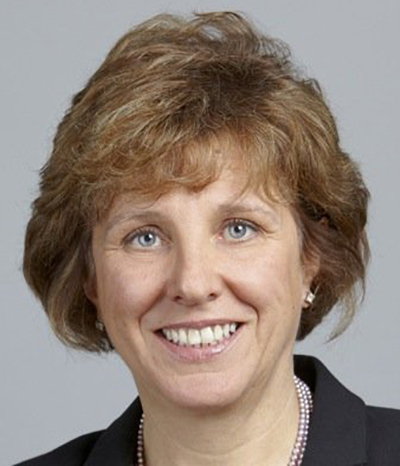PwC report indicates deal-making may generate long-term savings, but adds to higher medical costs as hospital systems dominate markets and drive up prices
Consolidation of big hospital health networks combined with a loss of independent doctor practices has changed the healthcare landscape in recent years, and clinical laboratories and anatomic pathology groups have been directly impacted. Now, those trends, along with increased access to care, are expected to push employer medical cost up by as much as 6% in 2019.
That’s according to the PricewaterhouseCoopers (PwC) Health Research Institute (HRI) “Behind the Numbers” annual analysis of the employer-based market.
The continued deal-making is bad news for medical laboratories, since super-sized hospital systems typically trim the budgets of laboratory and other services to improve operating efficiencies.
At the same time, more doctors are practicing as employees of hospitals, health networks, and medical groups. This physician consolidation presents challenges for independent clinical laboratories, which often lose test orders to in-house hospital labs when physicians no longer practice independently.
Consumer Demand for Access to Healthcare Will Drive Costs Higher
Consolidation-related pressures are not the only forces pushing medical costs higher. HRI expects a third factor to inflate medical costs in 2019—consumer pressure for more ways to access care.
The growth of care options such as: retail clinics, telemedicine, urgent care, and on-site employer health clinics may bring prices down over time, however increased utilization often raises employers’ healthcare costs in the short-term as workers take advantage of easier ways to access care, the report states.
Less Flu and High-Performing Health Networks Expected to Lower Costs
Conversely, HRI believes a milder flu season in 2018-2019 may help keep spending increases in check. Additionally, the growing number of healthcare advocates in the workplace who educate employees on the use of their healthcare benefits, plus the creation of high-performing health networks—both of which emphasize high-quality care alongside cost savings—should serve to deflate healthcare spending.
In an interview with FierceHealthcare, Barbara Gniewek, a Health Services Principal at PwC, compared attempts to control healthcare spending to a balloon. “Every time you squeeze one area” another issue crops up, she said.
Employer healthcare costs have risen 5.5% to 7% annually for each of the past five years. HRI contends downward pressure on healthcare prices overall—not just drug prices—may be the only remaining way for employers and health plans to keep healthcare spending from outpacing inflation.
“Efforts by employers to cut utilization have mostly run their course,” the report states. “Employers and consumers are plagued by high prices that continue to grow because of new, expensive medical services and drugs, and other factors, such as consolidation.”
While the 2019 spending number pales in comparison to the annual double-digit growth in healthcare spending two decades ago, Gniewek told RevCycleIntelligence the inflation news should not be viewed as positive.

“While some people are relieved that it’s not the high rates of 15 or 20 years ago, costs going up at that rate still [are] unsustainable,” Barbara Gniewek, Health Services Principal at PwC, told RevCycleIntelligence. “We still haven’t figured out how to control healthcare costs and we still don’t have the type of healthcare that we need.” (Photo copyright: PricewaterhouseCoopers.)
In theory, healthcare consolidation should create economies of scale that result in efficiencies that drive costs lower. However, reality can be much different, since short-term prices often rise when one health system suddenly dominates a market.
“We need to start getting to the point where we pull out the excess redundancies in the system and be able to monetize that in terms of savings,” Gniewek told RevCycleIntelligence. “We just haven’t seen that happen yet. It’s been more, ‘I own the market, so I can drive up the prices.’ As the government and employers demand better price control and want to do some direct contracting or high-performing networks, then eventually consolidations will be more efficient.”
Knowledge@Wharton, an online business analysis journal from the Wharton School of the University of Pennsylvania, notes one of the consequences of the Affordable Care Act was the “giant wave of consolidation” it sparked.
“It’s both ‘horizontal’ and ‘vertical,’ meaning hospitals aren’t just buying other hospitals, they’re picking up physician practices, rehabilitation facilities, and other ancillary healthcare providers,” a Knowledge@Wharton article on hospital consolidation stated.
Of the 115 health-system and hospital mergers announced in 2017, 10 were mega-deals involving sellers with net annual revenues of at least $1 billion, PwC noted in its annual report. The largest is a $28.4 billion merger between San Francisco-based Dignity Health and Catholic Health Initiatives of Englewood, Colo., which is expected to close in the coming year, according to a press release.
And a July 2018 report from the National Council on Compensation Insurance (NCCI) notes that though hospital mergers can lead to operating cost reductions for acquired hospitals of 15% to 30%, those reductions usually do not translate into price decreases.
“Research to date shows that hospital mergers increase the average price of hospital services by 6% to 18%. For Medicare, hospital concentration increases costs by increasing the quantity of care, rather than the price of care,” NCCI stated.
Clinical Laboratories May Be Part of Cost Reductions
The impact of physician employment was underscored in the March 2018 update to the Physician Advocacy Institute’s “Physician Practice Acquisition Study: National and Regional Changes in Physician Employment 2012-2016.” Over a four-year period from July 2012 to July 2016, the percentage of hospital-employed physicians increased by more than 63%.
If the factors fueling today’s increases in healthcare spending—consolidation and convenience—continue pushing costs higher, clinical laboratories and anatomic pathology groups will most likely be impacted as employers, insurers, and consumers look for ways to cut medical costs.
In this environment, medical laboratories must continually work to deliver more value to providers, patients, and healthcare networks.
—Andrea Downing Peck
Related Information:
Medical Cost Trend: Behind the Numbers 2019
Report: Consolidation, Convenience Care Major Drivers Behind Increased Healthcare Costs in 2019
The Impact of Hospital Consolidation on Medical Costs
Healthcare Mergers, Increased Access to Boost Medical Costs 6%



